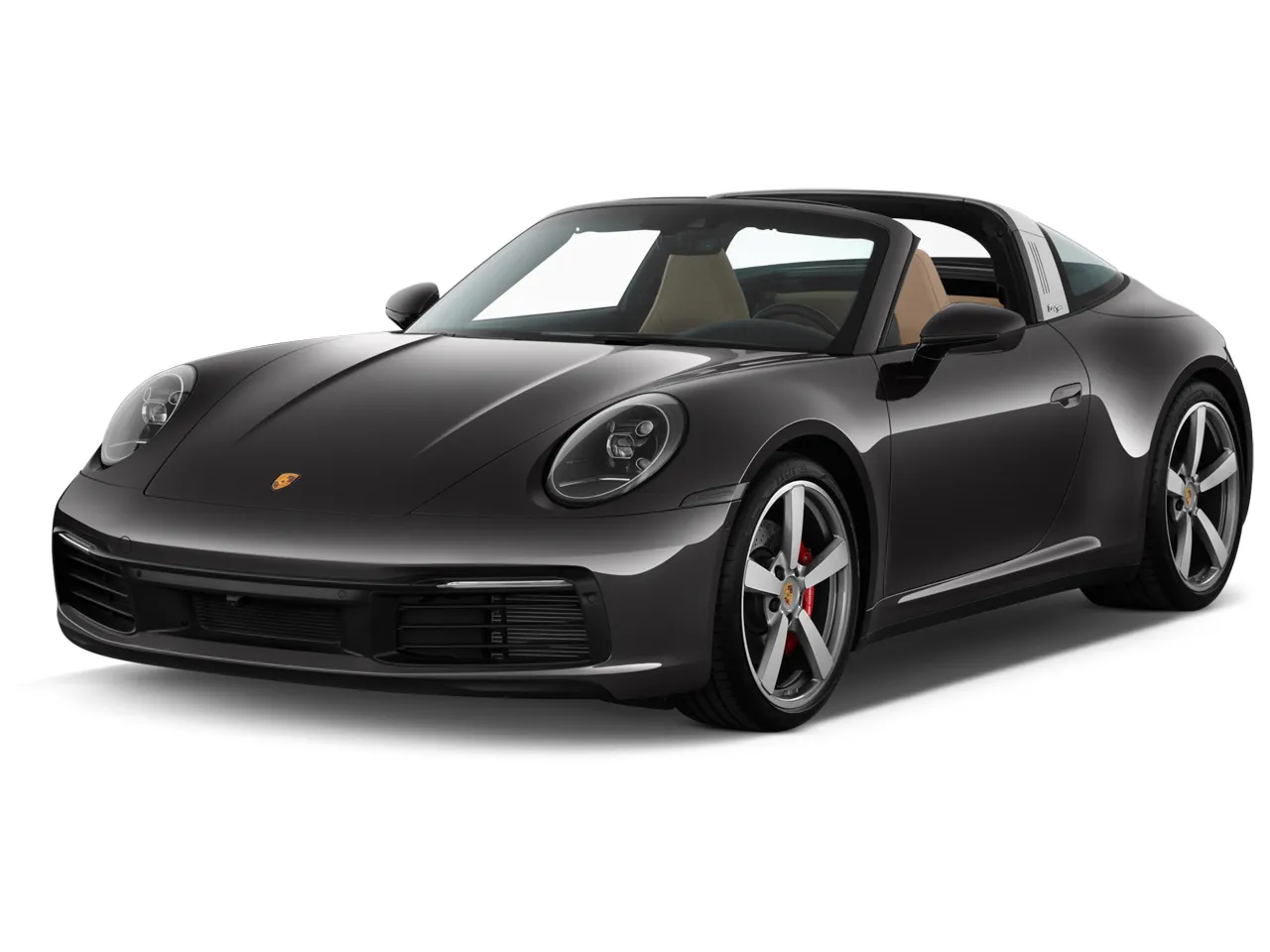Table of Contents
Every 911 has lots of power and athletic moves, and buyers can choose more of each as they move up the lineup. Its acceleration, grip, agility, and poise all contribute to a perfect 10 rating here.
Rear-wheel drive comes standard, and all-wheel drive is available on most models. The Dakar and Turbo models have all-wheel drive, as do models with 4 in their name.
How fast is the Porsche 911?
With 379 hp and 331 lb-ft of torque from a twin-turbo 3.0-liter flat-6 in its base model, the 911 is quick out of the gate, with a 0-60 mph time of 3.8 seconds and a top speed of 182 mph. The S model ups the output to 443 hp and 390 lb-ft, cutting the 0-60 mph run to 3.3 seconds and raising the top speed to 191 mph. The GTS model increases the power figures to 473 hp and 420 lb-ft, which knocks the 0-60 mph time down to 3.1 seconds and boosts the top speed to 193 mph. In all versions, the power comes on strong above 2,000 rpm, and the wide rear tires help the car hook up efficiently, making the 911 feel even more powerful than it is. The engine also emits the throaty, metallic rasp that has historically helped define the 911.
Those 0-60 mph times are with the quick-shifting 8-speed dual-clutch automatic transmission, but we still prefer the 7-speed manual that has short, positive gear throws and a natural and substantial clutch feel.
The GT3 and S/T models get a naturally aspirated 4.0-liter flat-6 that makes 502 hp and 346 lb-ft in the GT3 and 518 hp and 342 lb-ft in the GT3 RS and S/T. It doesn’t have as much punch down low as the turbo models, but it pulls hard up the rev range and still launches from 0-60 mph in as little as 3.2 seconds.
The Turbo models use a twin-turbo 3.8-liter flat-6. It cranks out 572 hp and 553 lb-ft in base form and 640 hp and 590 lb-ft in the Turbo S. The power is overwhelming in the Turbos, the 0-60 mph sprint flashes by in as little as 2.6 seconds, and the top speed reaches 205 mph.
Porsche 911 ride and handling
Set wide and low on wide and wider 19-inch front and 20-inch rear tires, the 911 is a model of handling poise. It’s naturally athletic and has lots of grip. Porsche offers plenty of performance features to make it even better, though. They include adaptive dampers, a sport-tuned suspension that lowers the car 0.4 inch, rear-wheel steering, larger brakes and carbon-ceramic brakes, a limited-slip rear differential with torque vectoring, active anti-roll bars, and larger 20-inch front and 21-inch rear tires. These features all conspire to improve grip and add to the car’s already plentiful track performance.
The 911 also offers lots of feel, too, through quick, weighty steering, strong brakes with a predictable pedal, and road feedback. The ride quality is also smooth enough for everyday driving, though the GTS, Turbo, GT3, and S/T models may be too firm for some drivers.
911 GT3 and S/T
The GT3 and S/T aim for driver engagement more than other 911s, while the GT3 RS is the best version to tackle a racetrack. Porsche cuts weight in these models, makes the engine noise more present, and adds lots of performance equipment. The GT3 RS is a different beast entirely, with up to 1,895 pounds of downforce through ground effects, spoilers, and even an adjustable rear wing; enhanced cooling; dampers that are adjustable on rebound and compression; and an adjustable rear differential. It will be the fastest 911 around most racetracks.
911 Dakar
The 911 Dakar goes for a different type of performance. It’s built with influences from off-road racing, just as its name suggests. Its suspension raises it 2.0 inches higher off the ground, and a hydraulic lift system like that used to raise the nose to enter driveways raises it another 1.2 inches. It also uses knobby all-terrain tires to grab the dirt, and comes standard with the GTS’s 473-hp engine and all-wheel drive. A specially tuned traction/stability control system makes adjustments to better handle off-road surfaces. It’s meant to go fast off-road, though, and doesn’t have a 2-speed transfer case or other low-speed off-roading systems.


